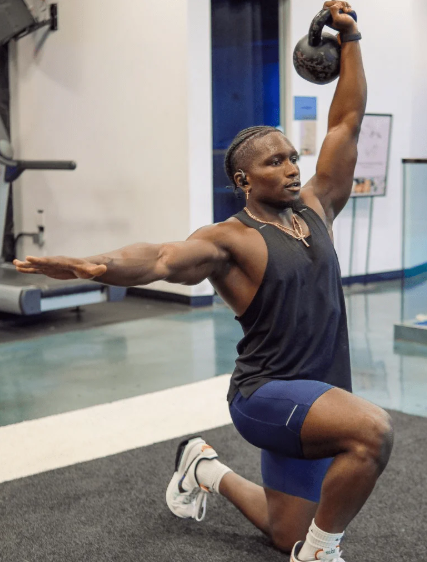Going to the gym consistently is essential for building muscle and staying fit. However, simply showing up and completing your workouts isn’t enough to see significant muscle growth. To optimize your time at the gym and achieve better results, you need a strategic approach that includes the right nutrition, targeted exercises, and recovery techniques.
Here’s how you can make your gym sessions more effective for muscle growth.
Prioritize Nutrition for Muscle Growth
The foundation of muscle building begins with nutrition. Before you even hit the gym, focus on fueling your body properly. Gaining muscle requires extra calories and a balance of macronutrients—protein, carbohydrates, and fats. If you’re not eating enough or not getting the right nutrients, your body won’t have what it needs to repair and build muscle tissue.
Make sure your diet includes whole, nutrient-rich foods. Protein, in particular, is crucial as it helps build and repair muscle. Aiming for at least 0.8 grams of protein per pound of body weight each day is a good target. For example, if you weigh 150 pounds, aim for 120 grams of protein daily. Good protein sources include chicken, fish, eggs, beans, and Greek yogurt.
Focus on Compound Exercises
One of the most effective ways to build muscle is by doing compound exercises. These movements engage multiple muscle groups at once, allowing you to lift heavier weights and stimulate muscle growth more efficiently. Some popular compound exercises include squats, deadlifts, bench presses, and pull-ups.
Incorporating compound exercises into your routine challenges your core and improves your form, making them even more effective. Aim to include two to three compound exercises in each workout to target various muscle groups.
Use Progressive Overload to Keep Advancing
To continue making gains in muscle size and strength, you need to gradually increase the workload placed on your muscles. This concept is known as progressive overload. To apply it, you can increase the weight, number of sets, or repetitions in your workouts over time.
It’s important to track your progress, so consider keeping a workout journal to monitor how much weight you’re lifting and how many reps you’re completing. This will help you stay on track and ensure that you’re consistently pushing yourself. Just be sure to increase the intensity at a manageable pace to avoid injury.
Rest and Recovery Are Key
Muscles don’t grow while you’re lifting weights—they grow when you’re resting. Giving your body the time it needs to recover is just as important as the workouts themselves. Aim for at least one or two rest days per week, and prioritize getting enough quality sleep.
Recovery also involves proper nutrition, hydration, and stretching. Make sure you’re consuming enough protein and carbs to repair and build muscle, and stay hydrated to keep your body performing at its best. Stretching after your workouts will help maintain flexibility and prevent injuries.
Frequently Asked Questions
1. How often should I go to the gym to build muscle?
Typically, hitting the gym at least three times a week is a solid plan for muscle growth. However, everyone’s body responds differently, so it’s important to listen to your body and adjust your workout frequency as needed.
2. Should I do cardio while trying to build muscle?
Cardio can improve overall fitness and heart health, but it’s not the most effective for building muscle. Focus on strength training with compound exercises and progressive overload for optimal muscle growth.
3. How long should I rest between sets?
Rest periods depend on your workout intensity and goals. For muscle-building, resting 30-60 seconds between sets is usually ideal. Adjust based on how your body feels and the intensity of the exercise.
4. Can I build muscle without weights?
While weightlifting is the most efficient way to build muscle, bodyweight exercises can also be effective, especially for beginners. As you progress, though, increasing the resistance will be necessary for continued muscle growth.
5. How long will it take to see muscle growth?
The rate at which you see muscle growth varies depending on your diet, genetics, and how hard you train. Generally, with consistent effort, you can expect to see noticeable changes in 4-8 weeks.
Final Thoughts
Optimizing your gym sessions for muscle growth requires a balanced approach: proper nutrition, the right exercises, progressive overload, and adequate rest. Consistency is key, so stay dedicated to your routine and make adjustments as needed. By focusing on form and gradually increasing the intensity of your workouts, you’ll build muscle and achieve a stronger, healthier body.

Leave a Comment